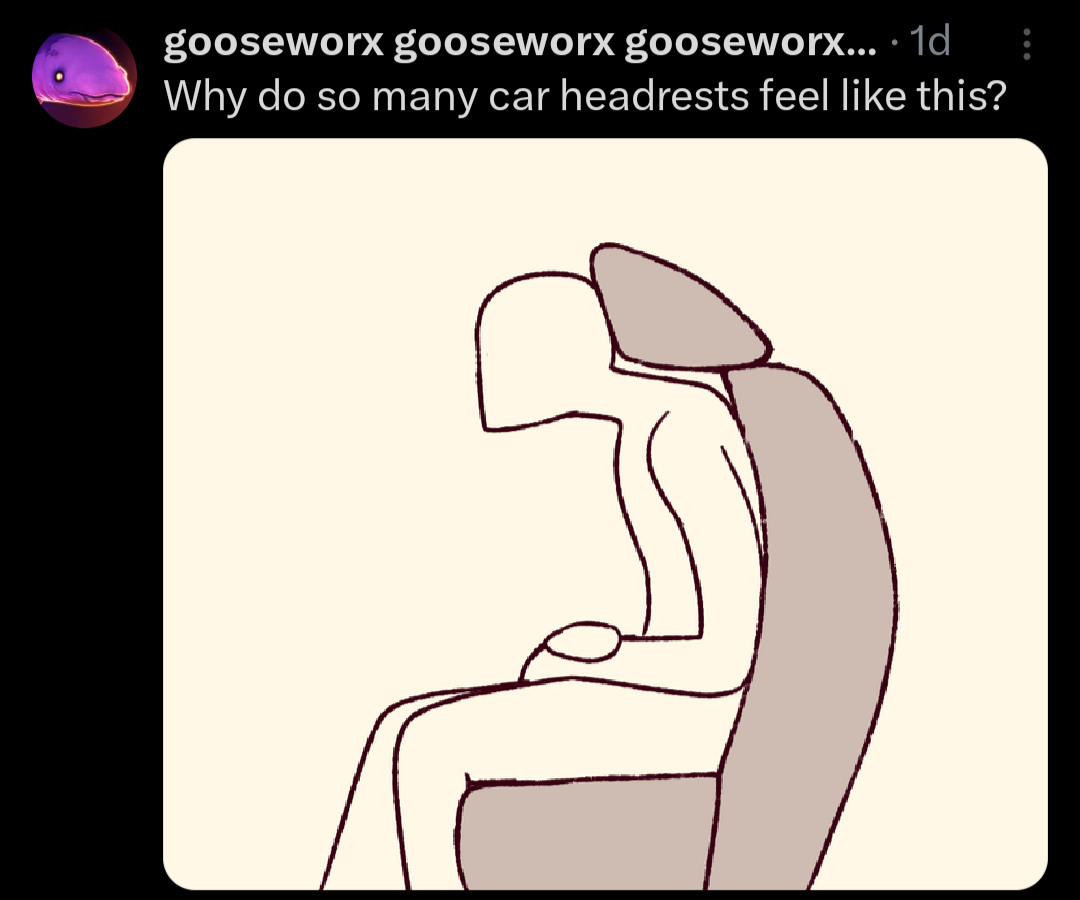this post was submitted on 29 Oct 2024
869 points (97.9% liked)
Microblog Memes
6928 readers
3889 users here now
A place to share screenshots of Microblog posts, whether from Mastodon, tumblr, ~~Twitter~~ X, KBin, Threads or elsewhere.
Created as an evolution of White People Twitter and other tweet-capture subreddits.
Rules:
- Please put at least one word relevant to the post in the post title.
- Be nice.
- No advertising, brand promotion or guerilla marketing.
- Posters are encouraged to link to the toot or tweet etc in the description of posts.
Related communities:
founded 2 years ago
MODERATORS
you are viewing a single comment's thread
view the rest of the comments
view the rest of the comments

Sure. What I'm inferring is the head moves more without a tight seatbelt, due to the additional inertia of your body, and its angle.
It might be easier to imagine it with an example. If you've ever taken a class in something like Judo, the first thing they'll teach you is how to fall. It is incredibly important to maintain good posture as you fall, as hitting the mat with your head tilted too high is something that can turn you paraplegic in a second.
Same goes for a car. If your posture is fucked up, and your head hits the headrest wrong, it could lead to a broken neck.
As you train better posture, both your spine and the muscles around it find a new relaxed state. Essentially eliminating the risk of your head folding under the headrest.
I've played Judo, and I'm a licensed EMT, and I've worked in ERs, and I'm a third year medical student. I am quite confident in telling you that you are incorrect. Modern safety standards make it so that the seatbelt locks in a crash and limits your longitudinal inertia. Also, many dummies (and actual humans I have cared for) have "hit their head wrong" on the headrest due to their height, posture, or position, and they don't break their necks. Did their scalenes, paraspinal muscles, and sternocleidomastoids hurt like hell? Absolutely. But they didn't have broken necks.
Your body can compensate for a lot, but it was the introduction of headrests in cars that has been one of the biggest contributors to the drastic reduction in fatalities. The point of the headrest is the same as the seatbelt: to limit the range of motion your body goes through in a crash. Seatbelt signs and headrest concussions are real things that can cause some pretty significant problems, but those problems are easier to fix when the patient isn't dead or quadriplegic.
That's what I was trying to say.
I've now realised that I've explained myself poor. To reiterate;
Seatbelts reduce whiplash, so does correct posture. Poor posture inherently leads to a loosed seatbelt because it extends the range between you and your seat.
A lot of people consider a crash which lurches you forward, but if you get rear ended, the difference which matters will be your posture. If your head and neck are cushioned, you're going to be much better off.
Fair point about the broken spines. It's not hard to imagine how much worse things could be without correctly fitted headrests and seatbelts.